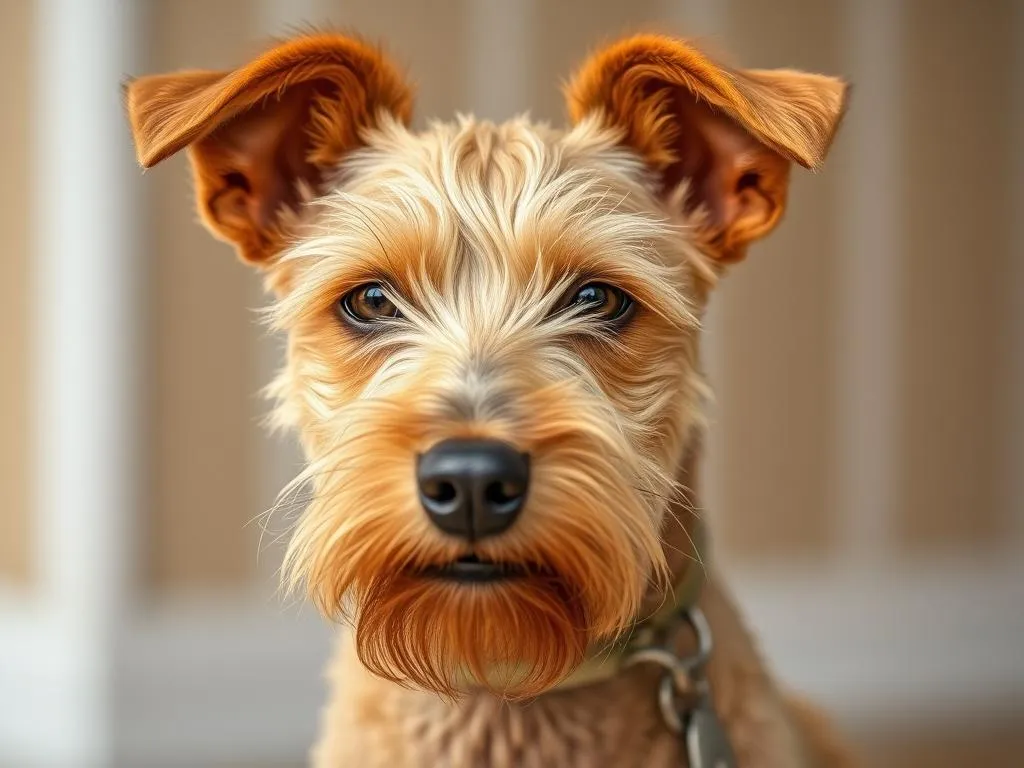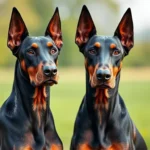
Introduction
Understanding different dog breeds is crucial for potential dog owners and enthusiasts alike. Each breed comes with its own unique characteristics, temperament, and care requirements. One breed that stands out for its distinctive traits is the Abyssinian Sand Terrier. This breed combines charm and intelligence, making it a noteworthy choice for many families. In this article, we will delve into various dog breeds, emphasizing the Abyssinian Sand Terrier and providing insights into its characteristics, care, and unique personality.
Understanding Dog Breeds
What is a Dog Breed?
A dog breed is a specific group of domesticated dogs that share common characteristics, such as physical features, behavior, and temperament. The significance of defining dog breeds lies in the recognition that each breed was developed for particular purposes, whether it be herding, hunting, or companionship. Breed standards established by kennel clubs help maintain these traits, ensuring that dogs of the same breed possess similar physical and behavioral characteristics.
Importance of Choosing the Right Breed
Choosing the right dog breed is a crucial decision that can significantly impact your lifestyle and the dog’s well-being. Factors such as your living situation, activity level, and family dynamics should be considered:
- Lifestyle: Active individuals may prefer breeds that require more exercise, while those in smaller living spaces might need a more adaptable breed.
- Activity Level: Some breeds necessitate daily exercise to stay healthy and happy, while others are more sedentary.
- Temperament: Understanding a breed’s temperament can help you find a dog that fits well with your family’s dynamics.
The breed you choose will also influence training, social behavior, and health considerations, making it imperative to select one that aligns with your lifestyle.
Overview of Popular Dog Breeds
Group Classification of Dog Breeds
Dog breeds are classified into various groups based on their characteristics and the roles they were bred for. Here are the primary groups:
- Sporting: Breeds that assist hunters by locating and retrieving game (e.g., Labrador Retriever).
- Working: Dogs bred for specific tasks like guarding and pulling sleds (e.g., Siberian Husky).
- Herding: Breeds that help in herding livestock (e.g., Border Collie).
- Hound: Dogs known for their keen sense of smell and stamina (e.g., Beagle).
- Terriers: Breeds that were originally bred to hunt vermin (e.g., Jack Russell Terrier).
- Toy: Small breeds that are primarily bred for companionship (e.g., Chihuahua).
- Non-Sporting: A diverse group that includes breeds with varied characteristics (e.g., Bulldog).
- Miscellaneous: Breeds that are not yet fully recognized by major kennel clubs.
Highlighted Breeds in Each Category
Here are some popular breeds from each category:
- Sporting: Golden Retriever, Cocker Spaniel
- Working: Doberman Pinscher, Rottweiler
- Herding: Australian Shepherd, Shetland Sheepdog
- Hound: Dachshund, Bloodhound
- Terriers: West Highland White Terrier, Airedale Terrier
- Toy: Pomeranian, Maltese
- Non-Sporting: Poodle, Shih Tzu
- Miscellaneous: American Bully, Dogo Argentino
Abyssinian Sand Terrier: A Closer Look
Origin and History
The Abyssinian Sand Terrier is a unique breed that traces its origins back to ancient Ethiopia, historically known as Abyssinia. This breed was initially utilized for hunting and guarding, showcasing remarkable agility and intelligence. Over the years, the Abyssinian Sand Terrier has adapted to various roles, including as a loyal companion in households across the globe. Its historical significance lies not only in its utility but also in its representation of a rich cultural heritage associated with the region.
Physical Characteristics
The Abyssinian Sand Terrier is a medium-sized dog known for its athletic build. Here are some key physical traits:
- Size: Typically weighs between 25-40 pounds.
- Height: Stands about 14-18 inches tall at the shoulder.
- Coat Type: Features a short, smooth coat that requires minimal grooming.
- Color Variations: Common colors include sandy beige, fawn, and light brown.
Distinctive features include a well-defined musculature, alert ears, and expressive eyes that reflect its intelligence and curiosity.
Temperament and Behavior
The Abyssinian Sand Terrier is known for its lively and affectionate nature. Here are some typical personality traits:
- Playful: Enjoys engaging in games and activities with family members.
- Intelligent: Quick to learn and eager to please, making them relatively easy to train.
- Social: Generally friendly with other pets and children, although early socialization is essential.
This breed’s trainability and intelligence make it an excellent candidate for various dog sports and obedience training.
Health and Lifespan
Like all breeds, the Abyssinian Sand Terrier is susceptible to certain health issues. Common health considerations include:
- Hip Dysplasia: A genetic condition that can affect mobility.
- Skin Allergies: Prone to allergies that may manifest as skin irritations.
- Ear Infections: Due to their ear structure, they may experience ear-related issues.
The average lifespan of an Abyssinian Sand Terrier is around 12-15 years, and regular veterinary check-ups can help manage any health concerns effectively.
Care and Maintenance of the Abyssinian Sand Terrier
Nutrition and Diet
Providing a balanced diet is essential for the health and well-being of the Abyssinian Sand Terrier. Here are some dietary guidelines:
- High-Quality Dog Food: Choose a premium dog food that meets the nutritional requirements for medium-sized breeds.
- Portion Control: Pay attention to portion sizes to prevent obesity, which can lead to health issues.
- Fresh Water: Ensure access to clean, fresh water at all times.
A well-balanced diet will keep your dog energetic and healthy, enhancing its longevity.
Grooming Requirements
The Abyssinian Sand Terrier has minimal grooming needs due to its short coat. Here are some grooming tips:
- Brushing: Brush once a week to remove loose hair and debris.
- Bathing: Bathe as needed, but avoid over-bathing to prevent skin irritation.
- Nail Trimming: Regularly trim nails to prevent overgrowth, which can cause discomfort.
Maintaining a healthy coat and skin is important for this breed, and regular grooming can promote overall well-being.
Exercise Needs
The Abyssinian Sand Terrier requires regular exercise to stay fit and mentally stimulated. Recommended activities include:
- Daily Walks: At least 30-60 minutes of walking each day.
- Playtime: Engage in interactive play like fetch or tug-of-war.
- Dog Sports: Consider agility training or obedience classes for added stimulation.
Regular exercise not only keeps your dog physically healthy but also contributes to better behavior and overall happiness.
Training Techniques
Training an Abyssinian Sand Terrier can be a rewarding experience due to its intelligence and eagerness to please. Here are some effective training techniques:
- Positive Reinforcement: Use treats and praise to reward good behavior.
- Consistency: Be consistent with commands and rules to avoid confusion.
- Socialization: Expose your dog to various environments, people, and other pets to promote good social behavior.
Training sessions should be fun and engaging, ensuring a strong bond between you and your dog.
Comparing the Abyssinian Sand Terrier to Other Breeds
Similar Breeds
Several breeds share characteristics with the Abyssinian Sand Terrier. These include:
- Basenji: Known for its alertness and independence, resembling the Abyssinian Sand Terrier in size and temperament.
- American Staffordshire Terrier: This breed is also energetic and intelligent, requiring similar care and training.
- Whippet: Like the Abyssinian Sand Terrier, Whippets are agile and affectionate, making them great companions.
Unique Advantages of the Abyssinian Sand Terrier
What sets the Abyssinian Sand Terrier apart from other breeds includes:
- Versatility: Adaptable to various living situations, making it suitable for both apartments and larger homes.
- Affectionate Nature: Known for forming strong bonds with family members, providing companionship and loyalty.
- Minimal Grooming Needs: Its short coat requires less maintenance compared to many other breeds.
This breed thrives in active environments where it can engage with its family, making it an ideal choice for active households.
Conclusion
Understanding different dog breeds is essential for anyone considering dog ownership, especially when focusing on a breed as unique as the Abyssinian Sand Terrier. This breed offers a blend of intelligence, playfulness, and affectionate nature, making it a wonderful companion for many families. As you contemplate your choice of breed, consider factors like your lifestyle and preferences to ensure the best match. Dogs, in all their varieties, bring immense joy and companionship to our lives, enriching our experiences with their unwavering loyalty and love.









